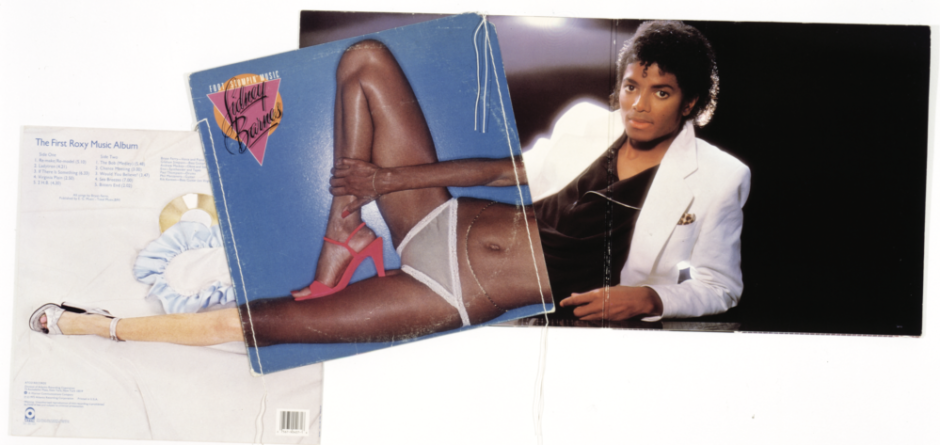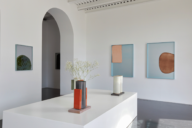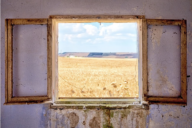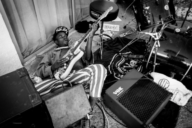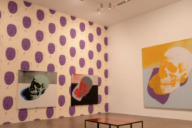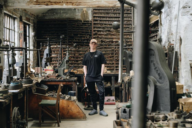Christian Marclay vinyl junkie art
If ‘Thriller’ or ‘London Calling’ were images, what would they look like? This is a question that artist Christian Marclay strives to answer. In light of MJ’s alleged sexploits you may not want to dwell on Thriller too much, yet Marclay bridges the gap between what we see and hear with incredibly good bad taste, even using MJ as a muse.
Swiss Born and NYC residing Marclay is an art-school grad with a punk-rock heart out to give sound a physical image. “I felt a lot more energy coming out of the music world than from the art world”, says Marclay. “I tended to gravitate more towards what was happening in music clubs than towards what was happening in museums and galleries.” So he decided to blend the two in his work.
Operating not only under the artist moniker he stretches his talents to Dj’ing, composing and impromptu creative projects, such as the ‘Graffiti Composition’. This involved 5,000 blank sheets of music fly posted across the streets of Berlin with a request for the public to do their stuff. These ‘pieces’ will be performed in conjunction with Marclay’s retrospective now exhibiting at the Barbican.
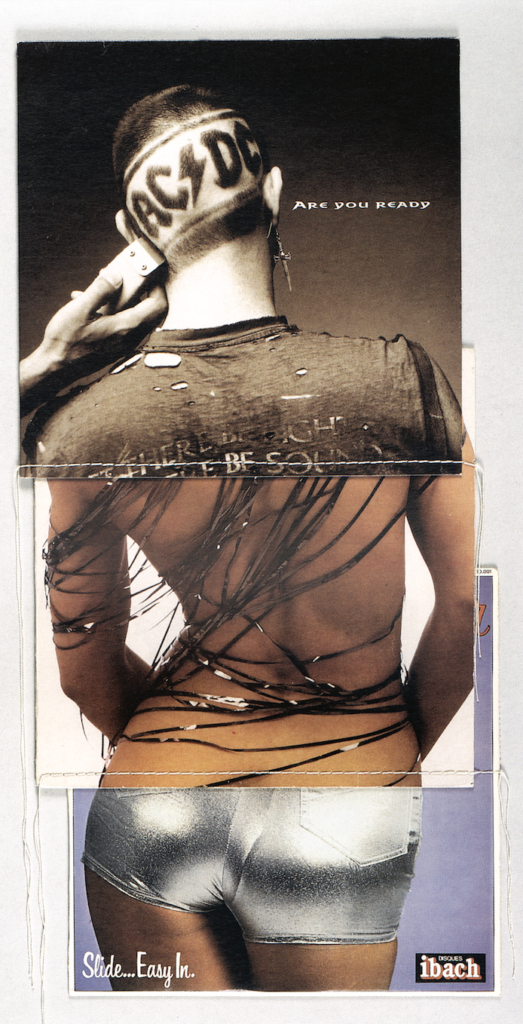
Taking ready-made materials, Marclay is the vinyl junkie’s nightmare; he carves segments from records and fills in the gaps with a hacked section from another. Work like this highlights his interest in the way sound is recorded, reproduced and presented visually. “I realised that when I listened to a record, there were all these unwanted sounds, clicks and pops. Instead of rejecting these residual sounds, I’ve tried to use them, bringing them to the foreground to make people aware that they’re listening to a recording and not live music. For me, it was important to have this awareness and underline it, to give it a voice. It has an expressive power in itself. When something goes wrong, like when the needle skips, something unpredictable happens, that wasn’t the intention of the recording artist. In that incident, something new and exciting happens. For me, it has creative potential.” This massacred plastic can be played and is also a pointer to his obsession with metamorphosis.
More ruthless than a back-street plastic surgeon Marclay has created the ‘Body Mix’ collection a series of tongue-in-cheek collages stitching together famous and obscure record covers. MJ’s body stretches out into a long and luscious pair of white-chicks legs, compete with killer stilettos and in ‘Doorsiana’ Jim Morrison’s outstretched arms blend into Diana Ross’ elbow and Cat Stevens playing with a yo-yo. And this is still more convincing than the work Joan Rivers or Victoria Beckham has had done.
Another ‘cut and paste’ piece is the audio-visual collage ‘Video Quartet’. A 13-minute composition of nearly 700 film clips from Hollywood flicks, porno’s and music vids. Set against a mish-mash soundtrack it’s an alternative take on MTV culture. Here Marclay stresses the importance of experiencing sound and visuals simultaneously. “It may seem like a contradiction but I’m interested in sound,” he says. “Not just how it sounds but how it looks.”
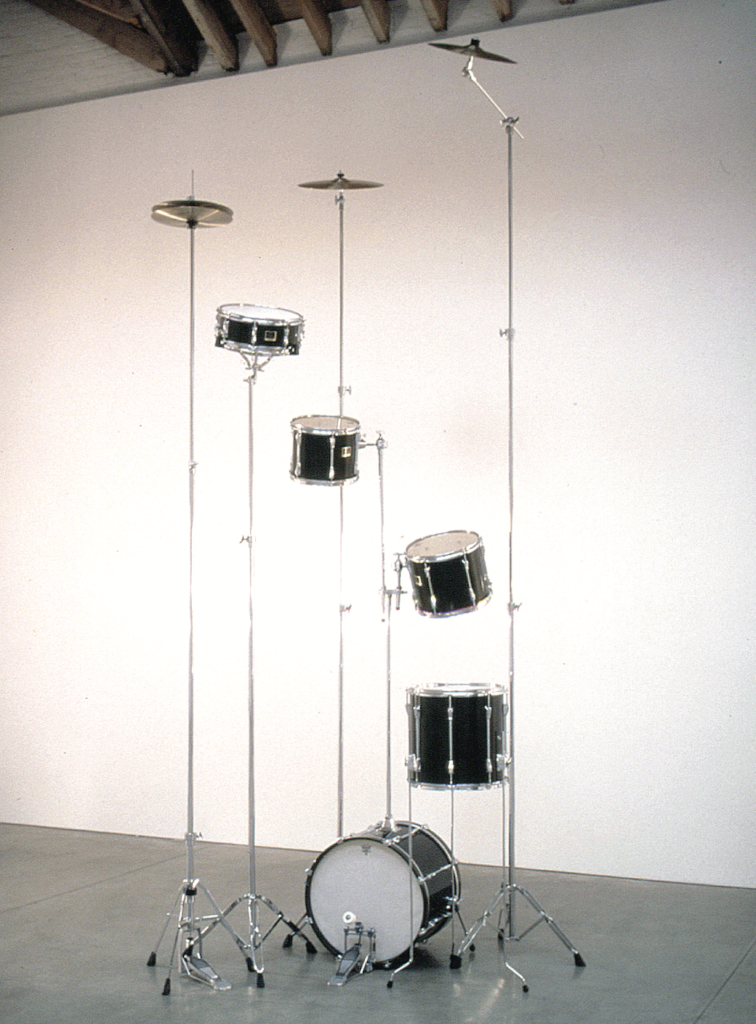
As mentioned earlier examining the relationship between music, art and how they are received in society is a clear motivation of Marclay’s. This can be particularly seen in the sculpture ‘The Beatles’, a pillow crocheted from tape recordings of the fab fours’ work, it reflects how comforting and familiar the music of the Beatles is too many listeners. Not all of his pieces are this soothing or as humorous as the ‘Body Mix’, the subtle dark undertones of those pieces are more obvious in ‘Guitar Drag’, where an amplified Fender is dragged behind a truck and the music it makes form a brutal soundtrack of its destruction. This video was not only inspired by the infamous and ritualistic guitar smash, ala The Who or The Clash, but it also references the murder of John Byrd Jr, a black man dragged to death by a group of white Texan farmers in 1998. Marclay often finds a way to relate contemporary issues and culture to his work.
This intrigue with how rock music influences art has left Marclay keen for the divide between the two to be closed. “Some people just listen to music others just look at art, some do both but they don’t do it in the same place. Having an interest in both worlds it was natural for me to bring them together. Everybody experiences music one way or another, music is usually more democratic than art, so I feel I can touch more people with it, even if I make a piece that doesn’t make any sound, but deal with notions of perception of sound. Most pieces are silent but are about sound. We take a lot of our sound experiences for granted. We don’t question sounds as much as images.”
Kerry Eustice
First appeared in Fused magazine issue 22

